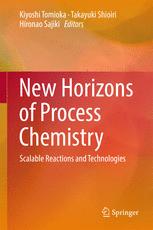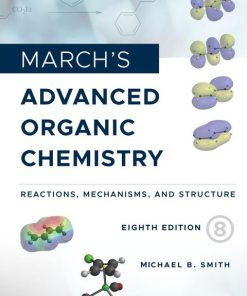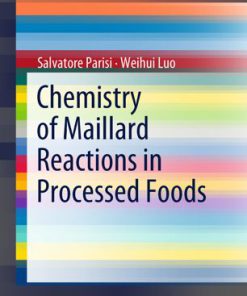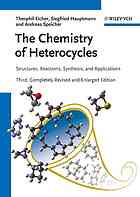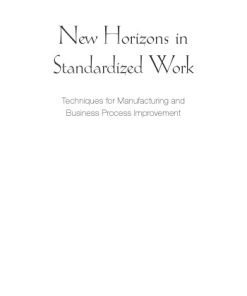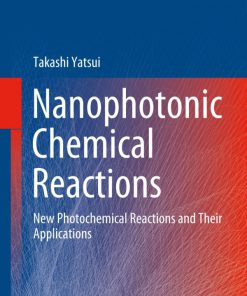New Horizons of Process Chemistry Scalable Reactions and Technologies 1st edition by Kiyoshi Tomioka 9789811034213 9811034214
$50.00 Original price was: $50.00.$25.00Current price is: $25.00.
New Horizons of Process Chemistry Scalable Reactions and Technologies 1st edition by Kiyoshi Tomioka – Ebook PDF Instant Download/Delivery: 9789811034213, 9811034214
Full download New Horizons of Process Chemistry Scalable Reactions and Technologies 1st edition after payment
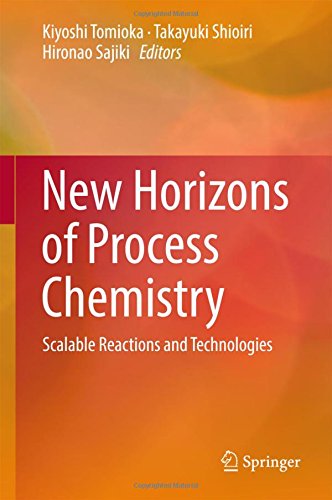
Product details:
• ISBN 10:9811034214
• ISBN 13:9789811034213
• Author:Kiyoshi Tomioka
New Horizons of Process Chemistry
Scalable Reactions and Technologies
The methodologies and technologies adaptable to process chemistry are the focus of this unique book, as new catalysts, reactions, and methods for the synthesis of functional materials are dealt with in depth for the first time. Those materials take in pharmaceuticals, agrochemicals, functional materials, chemical raw materials, and other substances in the field of process chemistry including green chemistry. Process chemistry underpins the competitiveness of chemical and pharmaceutical industries, but its stagnation is estimated to cause industrial depression and excessive loss. For that reason, chemists focus on process chemistry consistently so that the development of novel and efficient new reactions and technologies provides an essential stimulus. In addition, this volume describes the important development of selected new synthetic devices for process development and the process design for a larger scale, thus furnishing a valuable source for all who are engaged in process chemistry.
New Horizons of Process Chemistry Scalable Reactions and Technologies 1st Table of contents:
1 Recent Advances in Rare Earth Metal Asymmetric Catalysis Toward Practical Synthesis of Therapeutic
Abstract
1 Introduction
2 La-based Catalysis: Catalytic Asymmetric Amination
3 Nd-Based Catalysis: Catalytic Asymmetric Nitroaldol Reaction
4 Conclusion
References
2 Metal Catalyzed Synthetic Reactions via Aerobic Oxidation as a Key Step
Abstract
1 Introduction
2 Aerobic Cu-Catalyzed Acylation-Wittig Reaction Under Neutral Conditions
2.1 Acylation-Wittig Reaction Under Neutral Conditions
2.2 Cu(II)-Catalyzed Acylation-Wittig Reaction [3]2.3 Cu(II) Catalyzed Dissymmetrization of Dithiomalonates [14]3 Heterogeneous Metal-Catalyzed Aerobic Oxidative Biaryl Coupling
3.1 Aerobic Oxidative Homo-Coupling of Aryl Amines [26]3.2 Aerobic C–H/C–H Cross-Coupling of Aryl Amines [42]4 Conclusion
Acknowledgements
References
3 Heterogeneous Platinum Metal Catalyzed Deuterium Generation and Labeling Methods Using Hydrogen Ga
Abstract
1 Heterogeneous Platinum Metal Catalyzed Post-synthetic Deuterium Labeling Method Using D2O as the D
2 Replacement of Hydrogen Gas by Deuterium Gas via Pd/C-Catalyzed H2–D2 Exchange Reaction Between
References
4 Pd on Spherical Carbon (Pd/SC)-Catalyzed Chemoselective Hydrogenation
Abstract
1 Introduction
2 Results and Discussion
2.1 Catalytic Activity of Pd/SC for Hydrogenation Reactions
2.2 Reuse of Pd/SC
3 Conclusions
Acknowledgements
References
5 Environment-Friendly Iron-Catalyzed Reactions
Abstract
1 Use of Siloxy and Alkoxy Groups as Leaving Groups
1.1 Nucleophilic Substitutions of Benzylic Silyl Ethers
1.1.1 Azidation
1.1.2 Friedel-Crafts Benzylation
1.2 Site-Selective Nucleophilic Substitution of Secondary/Tertiary Benzylic Methyl or Benzyl Ethers
1.3 Deprotection of Methoxyphenylmethyl Type-Protected Alcohols and Carboxylic Acids
2 Ring-Opening Substitutions
3 Application of Ring-Opening Reaction and Elimination of Siloxy Group to Form Naphthoquinone Methid
References
6 Tetranuclear Zinc Cluster-Catalyzed Transesterification
Abstract
1 Introduction
2 Tetranuclear Zinc Cluster
3 Transesterification
3.1 Introduction
3.2 Scope and Limitations
4 Chemoselective Acylation of Alcohols Over Amines
4.1 Introduction
4.2 Optimization of Reaction Conditions
4.3 Scope and Limitations
5 Activation by N-Heteroaromatics
5.1 DMAP
5.2 Bis(imidazole) Ligand (2nd Generation Zn Catalyst)
5.3 Polystyrene Resin-Supported Imidazole Ligand (3rd Generation Zn Catalyst)
6 Mechanistic Studies
7 Conclusion
Acknowledgements
References and Notes
7 Vinyl Ruthenium Carbenes: Valuable Intermediates in Catalysis
Abstract
1 Introduction
2 Intramolecular Ruthenium Catalyzed Redox, Neutral [1,n]-Hydride Transfer/Cyclization Processes
3 Heterocyclizations via Vinyl Ruthenium Carbene Intermediates from Alkynals and Alkynones
4 Heterocyclizations via Vinyl Ruthenium Carbene Intermediates from Ortho-(Alkynyloxy)Benzylamines
5 DFT Studies of the TMS-Substituted Vinyl Ruthenium Carbenes: Formation and Stereoselective Cycliza
6 Conclusions
Acknowledgements
References
8 Radical-Based Late Stage C–H Functionalization of Heteroaromatics in Drug Discovery
Abstract
1 Introduction
2 C–H Functionalization with Aryl/Alkylboronic Acids
2.1 Direct C–H Arylation of Heteroaromatics with Arylboronic Acids
2.2 C–H Functionalization of Quinones with Aryl/Alkylboronic Acids
2.3 Divergent Synthesis of Meroterpenoids Using Radical Based C–H Alkylation
3 C–H Functionalization with Sodium/Zinc Alkyl Sulfinates
3.1 Radical-Based C–H Trifluoromethylation of Heteroaromatics
3.2 Direct and Practical C–H Difluoromethylation Using Zn(SO2CF2H)2
3.3 Direct and Practical C–H Alkylation Using Various Zinc Sulfinates
3.4 Power of Alkylsulfinates-Mediated C–H Functionalization in Drug Discovery
4 Summary
References
9 Magnetic Nanoparticle-Supported Iodoarene Oxidative Catalysts and Its Application to Phenol Oxidat
Abstract
1 Introduction
2 Silica-Coated Magnetic Nanoparticle-Supported Iodoarene Catalyst
3 Phosphonic Acid-Coated Magnetic Nanoparticle-Supported Iodoarene Catalyst
4 Conclusion
5 Experimental Procedure
References and Notes
10 Recent Development of Diphenyl Phosphorazidate (DPPA) as a Synthetic Reagent
Abstract
1 Introduction
2 Peptide and Amide Bonds Formation
3 Macrolactamization
4 The Modified Curtius Reaction
5 Conversion of Hydroxyl Groups to Azides
5.1 The Bose-Mitsunobu Azidation
5.2 The Merck Azidation
6 Azidation of Pyridine N-Oxides Using DPPA
7 N-Alkylation with DPPA
8 [3+2] Dipolar Cycloadditions of DPPA
9 Synthesis of Phosphoramidates and Carbamate Using DPPA
10 Reactions of Carbamate Anions with DPPA
11 Conclusion
References
11 Methylenation Reaction of Carbonyl Compounds Using Julia-Kocienski Reagents
Abstract
1 Introduction
2 Methylenation Reaction with Benzothiazol-2-yl (BT) Methyl Sulfone
3 Methylenation Reaction with Methyl 1-Phenyl-1H-tetrazol-5-yl (PT) Sulfone
4 Methylenation Reaction with 1-Tert-Butyl-1H-tetrazol-5-yl (TBT) Methyl Sulfone
5 Methylenation Reaction with 3,5-Bis(trifluoromethyl)phenyl Methyl Sulfone
6 Methylenation Reaction with 1-Methylbenzimidazoly (MBI) Methyl Sulfone
7 Conclusions
Acknowledgements
References
12 Development of Shelf-Stable Reagents for Electrophilic Trifluoromethylthiolation Reaction
Abstract
1 Introduction
2 Trifluoromethanesulfonyl Hypervalent Iodonium Ylide: Preparation and Reactivity
2.1 Synthesis of Trifluoromethanesulfonyl Hypervalent Iodonium Ylide 1
2.2 Reaction of Reagent 1 with Enamines
2.3 Reaction of Reagent 1 with Indoles and β-Keto Esters
2.4 Reaction of Reagent 1 with Pyrroles
2.5 Reaction of Reagent 1 with Arylamines
2.6 Reaction of Reagent 1 with Allylsilanes and Silyl Enol Esters
2.7 Reaction of Reagent 1 with Boronic Acids
2.8 Reaction of Reagent 1 with Allylic Alcohols
2.9 Proposed Reaction Mechanism for Copper-Catalyzed Trifluoromethylthiolation by Reagent 1
3 2-Diazo-1-Phenyl-2-((Trifluoromethyl)Sulfonyl)Ethan-1-One: Preparation and Reactivity
3.1 Synthesis of 2-Diazo-1-Phenyl-2-((Trifluoromethyl)Sulfonyl)Ethan-1-One
3.2 Trifluoromethylthiolation of Nucleophiles with Reagent 2
3.3 Trifluoromethylthiolation of Aryl Iodides with Reagent 2
3.4 Reagent 2 as a Building Block for the Synthesis of β-Lactam Triflones
4 Conclusions
Acknowledgements
References
13 Practical and Environmentally Friendly Transformation of Tetrahydrofuran-2-Methanols to γ-Lacton
Abstract
1 Introduction
2 Direct Oxidative Cleavage Reactions
3 Multistep Conversion
4 Development of a Practical and Environmentally Friendly Oxidative Cleavage of Tetrahydrofuran-2-Me
5 Summary
References
14 Five Step Asymmetric Total Synthesis of β-Lycorane Employing Chiral Diether Ligand-Controlled Co
Abstract
1 Introduction
2 Asymmetric Conjugate Addition-Michael Reaction Cascade
3 Stereochemical Insight in Cascade Reaction
4 Asymmetric Total Synthesis of (+)-β-Lycorane in Five Steps
5 Conclusion
References
15 Concise Synthesis of Peptide Analogs Using a Fluorous-Fmoc Protection Strategy
Abstract
1 Introduction
2 Multigram Syntheses of f-Fmoc Reagents
3 FMS of Simple Peptides Employing f-Fmoc Reagents
3.1 FMS of Tripeptide Derivatives
3.2 ACE Inhibitory Assay of the Synthetic Tripeptides
4 FMS of Natural Product Isomers Employing f-Fmoc Reagents
4.1 Application of FMS for the Stereoisomer Synthesis of Natural Products
4.2 FMS of All Stereoisomers of Dendroamide A
5 Summary
Acknowledgements
References
16 A Challenging Synthesis of the Highly Functionalized Echinocandin ASP9726: A Successor of Micafun
Abstract
1 Introduction
2 Results and Discussion
2.1 New Synthetic Strategy
2.2 Challenging Direct Reduction of Amide to Primary Amine
2.3 Stepwise Approach to Primary Amine
2.3.1 Nitrile Formation
2.3.2 Catalytic Hydrogenation of Nitrile to Amine
2.3.3 Reductive Amination with Dihydroxyacetone
Does Hydride Reduction Work Well?
2.4 End Game Process
3 Conclusion
Acknowledgements
References
17 The Role of Silyl Protecting Group for the Synthesis of Procyanidins and Their Derivatives
Abstract
1 Introduction
2 Procyanidins Synthesis Incorporating a TBS Protecting Group
2.1 Synthesis of 3-O-Acyl-Catechin [33]2.2 Synthesis of Procyanidin Dimers [34]2.3 Synthesis of 3- or 5-O-Galloyl (+)-Catechin and (−)-Epicatechin Derivatives [35]3 Conclusions
References
18 Chemical Modification of the 3′-Dangling End of Small Interfering RNAs Such as siRNAs and miRNA
Abstract
1 Introduction
2 Chemical Modification for Enhanced Nuclease Resistance
3 Role of miRNAs
4 MicroRNAs as Tumor Suppressors
5 MicroRNA Replacement Therapy
5.1 Inhibitory Activity of 3′-Modified miRNA-143 Against Human Colon Cancer Cells
5.2 Anticancer Activities in Mice Xenografted with Human Colon Cancer
5.3 Anti-melanoma Activity of miR-205BP
5.4 Clinical Trial of Modified miR-205BP Against Canine Melanoma
6 New Type of the 3′-Modified dsRNAs
6.1 The 3′-Dangling End Bearing Urea/Thiourea-Bridged Aromatic Compounds
6.2 The 3′-Dangling End Bearing 1-deoxy-D-Ribofuranoses
7 Summary
References
19 Antiviral Agents Towards Chikungunya Virus: Structures, Syntheses, and Isolation from Natural Sou
Abstract
1 Introduction
2 Compound Classes, Structures, Biological Activities, and Mechanisms of Action
3 Concluding Remarks
References
20 Analytical Standards Purity Determination Using Quantitative Nuclear Magnetic Resonance
Abstract
1 Introduction
2 AQARI
3 Development of Certified Reference Material for AQARI, Sample Preparation, NMR Measurement, and Da
3.1 The Internal Standard
3.2 Gravimetry of the Analyte and Internal Standard in Sample Preparation
3.3 Quantitative NMR Data Acquisition
3.4 Data Processing Under Conditions Suitable for Quantitative Measurements
4 Application of AQARI to Creating Analytical Standards
5 Summary
References
People also search for New Horizons of Process Chemistry Scalable Reactions and Technologies 1st:
new horizons of process chemistry
new horizons of process chemistry scalable reactions and technologies
new horizons of phoenix
new horizons project management
new horizons programs
You may also like…
Science (General)
New Horizons of Process Chemistry Scalable Reactions and Technologies 1st Edition Kiyoshi Tomioka
Technique - Food Manufacturing
Chemistry of Maillard Reactions in Processed Foods Salvatore Parisi
Chemistry
The chemistry of heterocycles structure reactions synthesis and applications Speicher 9783527601837
Uncategorized
Dehydrogenation Reactions with 3d Metals 1st Edition by Basker Sundararaju 3031489519 9783031489518
Business & Economics
Politics & Philosophy
Engineering
Nanophotonic Chemical Reactions New Photochemical Reactions and Their Applications Takashi Yatsui




